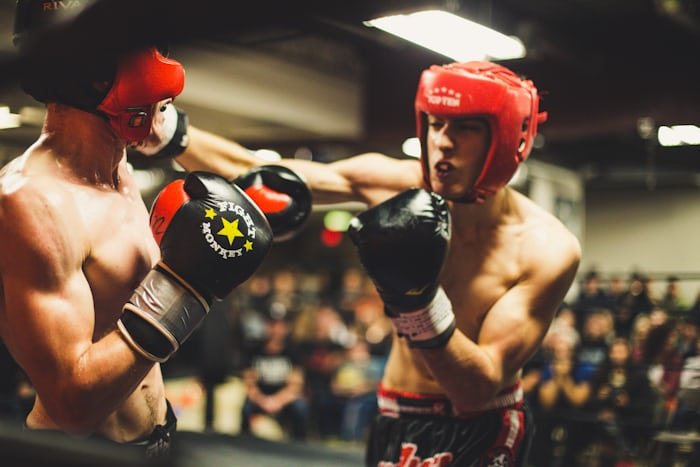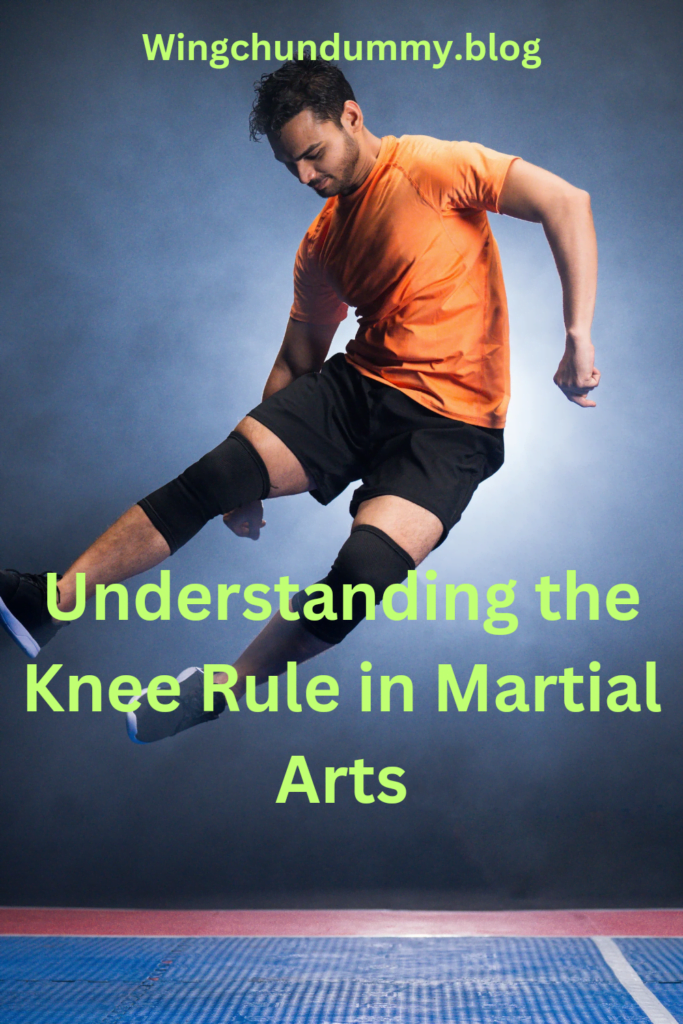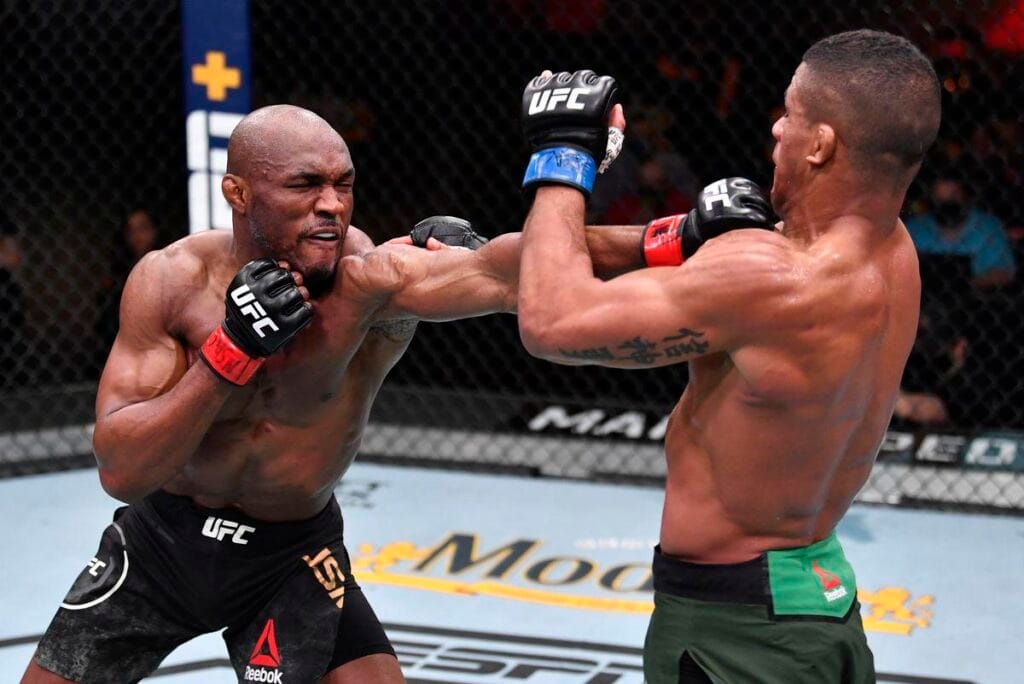The knee rule is a fundamental principle in the realm of martial arts, serving as a critical guideline for both practitioners and referees.
This rule governs the use of knee strikes, ensuring that they are executed within the confines of safety and sportsmanship.
Unlike other combat sports rules that might focus predominantly on striking, grappling, or ground techniques, the knee rule specifically addresses the permissible scenarios and methods for deploying knee strikes.
In martial arts disciplines such as Muay Thai, Mixed Martial Arts (MMA), and traditional forms like Karate and Taekwondo, the knee strike is a potent weapon.
The knee rule delineates the legal areas of the body to target, the appropriate distance for executing such strikes, and the circumstances under which they can be applied.
This is crucial not only for maintaining fairness in competition but also for minimizing the risk of severe injuries.
The knee rule’s significance extends beyond mere regulation; it shapes the strategic approach of martial artists.
Understanding when and how to use knee strikes can be the difference between victory and defeat.
For instance, in Muay Thai, the clinch and knee strikes are pivotal techniques, while in MMA, knees can be a decisive factor in both stand-up and ground fighting scenarios.
Knowledge of the knee rule allows practitioners to exploit opportunities and defend effectively against opponents’ knee attacks.
Adherence to the knee rule is essential for practitioners across various martial arts disciplines.
It ensures a level playing field and upholds the integrity of the sport.
Moreover, it fosters a deeper respect for the art form, as practitioners learn to balance aggression with control.
Coaches and instructors emphasize the knee rule in training, instilling a comprehensive understanding of its application and importance.
In this way, the knee rule not only enhances individual performance but also contributes to the overall safety and ethical standards of martial arts competitions.
Historical Background
The knee rule in martial arts has roots that date back several centuries, originating primarily in traditional Asian combat systems.
This regulation was initially introduced to maintain a balance between physical prowess and safety during training and competition.
The rule emerged as a response to the potentially severe injuries that could result from unchecked knee strikes.
Which are powerful due to the knee’s robust structure and the momentum generated by the human body.
In the early stages of martial arts development, disciplines such as Muay Thai and various forms of Kung Fu began to incorporate the knee rule.
For instance, in Muay Thai, known for its extensive use of knees.
The knee rule was essential in creating a systematic approach to training and competition.
This rule ensured that fighters could develop their skills without causing excessive harm to one another, fostering a safer environment for both practitioners and spectators.
The knee rule gained further prominence during the 20th century as martial arts spread globally and became more regulated through formal competitions and governing bodies.
Notable figures such as Chojun Miyagi, the founder of Goju-Ryu Karate, and Jigoro Kano, the creator of Judo, emphasized the importance of controlled techniques, including knee strikes.
Their advocacy helped integrate the knee rule into modern martial arts practices.
Ensuring that the emphasis remained on technique and discipline rather than brute force.
As martial arts evolved, the knee rule adapted to fit various styles and contexts.
In Brazilian Jiu-Jitsu, for example, the rule was modified to prevent knee strikes in certain grappling positions, thus protecting practitioners during ground combat.
Similarly, in mixed martial arts (MMA), regulatory bodies like the Unified Rules of MMA have specific guidelines on when and how knee strikes can be executed, balancing effectiveness with fighter safety.

Today, the knee rule continues to be a fundamental aspect of martial arts, reflecting a long history of adaptation and regulation aimed at preserving the integrity and safety of these combat sports.
Purpose and Importance
The knee rule in martial arts serves as a critical guideline aimed at preserving the of practitioners, ensuring fair play, and upholding the integrity of the sport.
This rule typically restricts the use of knee strikes to specific areas of the body or under certain conditions, thereby minimizing the risk of severe injuries.
For instance, in many martial arts disciplines, knee strikes to the head are either prohibited or tightly regulated to prevent concussions and other serious head traumas.
Safety is a paramount concern in martial arts, and the knee rule is instrumental in mitigating potential hazards.
By limiting the permissible areas and force of knee strikes, this rule helps to protect vital organs and vulnerable joints of the participants.
For example, a knee strike to the ribs could result in broken bones, while a strike to the knee joint itself could lead to debilitating injuries.
The knee rule thus ensures that practitioners can train and compete with reduced risk of enduring long-term physical damage.
In addition to safety, the knee rule is essential for maintaining fair play.
It prevents more experienced or physically stronger competitors from gaining an undue advantage by excessively utilizing knee strikes, which can be particularly devastating.
This rule levels the playing field, making competitions more about skill, technique, and strategy rather than brute force.
Fair play is further promoted by discouraging actions that could be considered unsportsmanlike or overly aggressive.
The integrity of martial arts as a disciplined and respectful sport is also reinforced by the knee rule.
By adhering to these guidelines, practitioners demonstrate respect for their opponents and the art form itself.
Instances where the knee rule is crucial include sparring sessions and competitive matches, where the rule helps in preventing injuries and fostering a spirit of sportsmanship.
This, in turn, contributes to the overall positive perception and sustainability of martial arts.
Application in Different Martial Arts Styles
The knee rule, a crucial component of martial arts, varies significantly across different styles, each with its unique regulations and restrictions.
In Muay Thai, also known as the “Art of Eight Limbs,” the use of knees is integral.
Muay Thai fighters employ knee strikes extensively in clinches and from a distance, targeting the head, body, and legs.
This style emphasizes powerful knee strikes to disable opponents, showcasing the knee rule’s liberal application.
Conversely, Brazilian Jiu-Jitsu (BJJ) adopts a more restrictive approach to knee strikes.
Primarily a grappling art, BJJ focuses on submissions and ground control, where knee strikes are generally prohibited.
The International Brazilian Jiu-Jitsu Federation (IBJJF) rules strictly forbid knee strikes in competition, aligning with the discipline’s emphasis on technique over striking.
Mixed Martial Arts (MMA) incorporates elements from various martial arts.
Resulting in a more complex application of the knee rule.
Governing bodies like the Ultimate Fighting Championship (UFC) allow knee strikes to the body and legs but impose restrictions on knee strikes to a downed opponent’s head.
This rule, often referred to as the “three-point rule,” prevents fighters from delivering knee strikes to an opponent with three points of contact on the ground.
Such as both feet and one hand, protecting fighters from potentially severe injuries.
In traditional Karate, knee strikes are less prevalent but not entirely absent.
Styles like Kyokushin Karate permit knee strikes in full-contact competitions, emphasizing their use in close combat situations.
However, point-based Karate tournaments, regulated by organizations such as the World Karate Federation (WKF).
Typically restrict knee strikes to ensure the safety of competitors.
Comparing these styles, it’s evident that the knee rule’s application ranges from extensive utilization in Muay Thai to strict prohibition in Brazilian Jiu-Jitsu.
MMA’s intermediate approach balances the allowance of knee strikes with safety measures to protect fighters.
These variations underscore the importance of understanding the specific rules and regulations within each martial art,
Ensuring practitioners can effectively and safely integrate knee strikes into their repertoire.
Techniques Involving Knees
In martial arts, the knee is a powerful weapon that can be employed in a variety of techniques.
Commonly, knee strikes are utilized in close-combat scenarios where other forms of attack may be less effective.
One prevalent technique is the clinch and knee strike, often seen in Muay Thai.
In this maneuver, the practitioner secures their opponent’s head with both hands.
Pulling them down while driving the knee upwards into the opponent’s midsection or face.
This not only maximizes power but also minimizes the distance required to land an effective strike.

Another notable technique is the flying knee.
Which involves a jumping motion to deliver a knee strike to the opponent’s upper body or head.
This technique is particularly effective for catching an opponent off-guard and can be a decisive move in a bout.
The execution of these techniques must adhere to the knee rule.
Ensuring that strikes are delivered within the acceptable target areas and with proper control to avoid penalties.
Training drills play a crucial role in mastering knee strikes.
Practitioners often engage in pad work, where they practice delivering knee strikes to a padded target held by a partner or coach.
This helps in developing accuracy, timing, and power.
Shadowboxing with an emphasis on knee strikes also allows athletes to refine their technique and footwork.
Plyometric exercises, such as jump squats and box jumps, are beneficial for building the explosive strength necessary for powerful knee strikes.
Proper form and technique are paramount in executing knee strikes safely and effectively.
Ensuring correct alignment of the body, from the pivot foot to the striking knee.
Helps prevent injuries and maximizes impact.
Additionally, maintaining balance and control throughout the execution of a knee strike is essential to avoid penalties.
Overextension or loss of balance can lead to disqualification in competitive settings and increase the risk of injury.
By focusing on these aspects, martial artists can develop proficient knee techniques that are both powerful and compliant with the rules of their respective disciplines.
Common Violations and Penalties
In martial arts competitions, the knee rule is designed to ensure the safety and fairness of the matches.
However, violations of this rule are not uncommon and can significantly alter the course of a fight.
One frequent violation involves executing a knee strike to a grounded opponent.
This occurs when a fighter uses a knee strike on an opponent who has at least one hand or knee touching the ground.
Which is prohibite in many martial arts disciplines.
Such infractions often result in immediate point deductions or disqualification.
Depending on the severity and intent.
Another common breach of the knee rule is targeting areas that are off-limits, such as the spine, back of the head, or joints.
These areas are particularly vulnerable and strikes can lead to severe injuries.
For instance, in a highly publicized MMA match.
A fighter delivered an illegal knee to the spine of their opponent, leading to a disqualification and suspension.
This incident not only changed the outcome of the fight but also highlighted the importance of adhering to safety regulations.
Unintentional violations, such as accidental knee strikes during a clinch or scramble, are also prevalent.
While the intent may not be malicious, referees still impose penalties to maintain control and discipline within the match.

The penalties for these infractions can range from warnings to point deductions, depending on the referee’s discretion.
Real-life examples underscore the impact of knee rule violations on fight outcomes.
In a notable kickboxing bout, a fighter was penalize for an illegal knee strike.
Resulting in a point deduction that ultimately cost them the match.
Such penalties not only affect the immediate score but can also influence a fighter’s strategy and morale.
Understanding these common violations and their associated penalties is crucial for competitors, coaches, and fans alike.
As it underscores the importance of adhering to the knee rule to ensure fair and safe competition in martial arts.
Training and Conditioning for Effective Knee Use
In martial arts, the effective use of knees is not merely about raw power but also about precision, timing, and adherence to the knee rule.
Training and conditioning play a pivotal role in mastering this vital aspect.
By focusing on strength training, flexibility exercises, and targeted drills.
Martial artists can significantly enhance their knee striking capabilities while ensuring compliance with competitive regulations.
Strength training is fundamental in developing the power required for effective knee strikes.
Exercises such as squats, lunges, and deadlifts target the lower body muscles.
Particularly the quadriceps, hamstrings, and glutes, which are essential for generating forceful knee strikes.
Additionally, core strengthening routines, including planks and Russian twists.
Contribute to the stability and control needed during knee strikes.
Flexibility exercises are equally crucial in maximizing knee strike efficiency.
Regular stretching routines that focus on the hip flexors, hamstrings, and lower back enhance the range of motion.
Yoga and dynamic stretching techniques can be particularly beneficial in improving overall flexibility and reducing the risk of injury.
Specific drills designed to enhance knee usage are integral to martial arts training.
Practicing knee strikes on heavy bags helps in building power and accuracy.
Partner drills, where one partner holds pads, simulate real-life scenarios, aiding in the refinement of technique and timing.

Shadowboxing is another effective drill that allows martial artists to practice knee strikes in combination with other movements.
Understanding and internalizing the knee rule during training is vital for ensuring compliance in competitive scenarios.
Regularly reviewing the rule and incorporating it into practice sessions helps in developing muscle memory.
Ensuring that knee strikes are execute within allowed parameters.
This not only avoids penalties but also enhances the strategic application of knee strikes in matches.
By integrating strength training, flexibility exercises, and specific drills, alongside a thorough understanding of the knee rule.
Martial artists can effectively incorporate knee strikes into their repertoire, enhancing their overall combat effectiveness.
Conclusion and Key Takeaways
Understanding the knee rule in martial arts is crucial for both practitioners and enthusiasts.
Throughout this blog post, we have delved into the origins, applications, and implications of the knee rule.
This rule is not merely a guideline but a fundamental aspect that ensures the safety and fairness of martial arts competitions.
By adhering to the knee rule, martial artists can protect themselves and their opponents from unnecessary injuries.
Promoting a respectful and disciplined environment.
One of the key points discussed is the historical context of the knee rule.
which underscores its longstanding importance in martial arts.
This rule has been shaped in years of practice and experience.
Making it a cornerstone of martial arts regulations.
Additionally, we explored the technical aspects of executing knee strikes within the legal framework.
Emphasizing the importance of precision and control.
Proper technique not only enhances performance but also aligns with the rule’s intent to minimize harm.
Furthermore, we examined the variations of the knee rule across different martial arts disciplines.
Each style has its unique set of regulations.
But the underlying principle remains consistent.
To ensure the safety of practitioners.
This variation necessitates a thorough understanding of the specific rules applicable to one’s discipline.
Underscoring the importance of continuous learning and adaptation.
Incorporating this knowledge into training and competition practices is essential.
Martial artists must be diligent in staying informed about the rules and regulations that govern their sport.
This commitment to understanding and adhering to the knee rule not only enhances personal performance but also contributes to the overall integrity of martial arts.

As a call to action, martial artists are encourage to prioritize safety.
And fairness by staying updated on rule changes and participating in regular training sessions that emphasize rule compliance.
By doing so, they uphold the core values of martial arts.
Fostering a safe and respectful community.
Together, let us continue to honor the traditions and regulations that have shaped martial arts into the respected discipline it is today.



